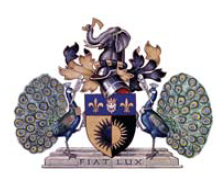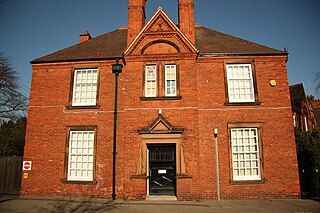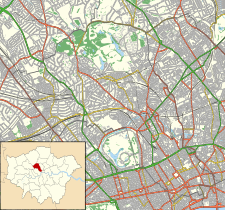
Moorfields Eye Hospital is a specialist National Health Service (NHS) eye hospital in Finsbury in the London Borough of Islington in London, England run by Moorfields Eye Hospital NHS Foundation Trust. Together with the UCL Institute of Ophthalmology, which is adjacent to the hospital, it is the oldest and largest centre for ophthalmic treatment, teaching and research in Europe.
The Seafarers Hospital Society, formerly the Seamen's Hospital Society, is a charity for people currently or previously employed by the British Merchant Navy and fishing fleets, and their families. It was established in 1821.

City Hospital is a major hospital located in Birmingham, England, operated by the Sandwell and West Birmingham Hospitals NHS Trust. It provides an extensive range of general and specialist hospital services. It is located in the Winson Green area of the west of the city.

The London Fever Hospital was a voluntary hospital financed from public donations in Liverpool Road in Islington, London. It was one of the first fever hospitals in the country.

The Royal Orthopaedic Hospital (ROH) is a National Health Service specialist orthopaedic hospital situated in Northfield, Birmingham, England. The ROH specialises in bone and joint problems.

St Leonard's Hospital is a hospital in Hoxton, London.

The Maida Vale Hospital for Nervous Diseases was a hospital that existed in west London from 1867 to 1993.

Liverpool Women's Hospital is a major obstetrics, gynaecology and neonatology research hospital in Liverpool, England. It is one of several specialist hospitals located within the Liverpool City Region, alongside Alder Hey Children's Hospital, Liverpool Heart and Chest Hospital, the Walton Centre, Mersey Regional Burns and Plastic Surgery Unit and Clatterbridge Cancer Centre. It is managed by the Liverpool Women's NHS Foundation Trust. The hospital receives approximately 50,000 patients annually and is the largest hospital for its specialism in Europe.

The Grove Hospital, originally the Grove Fever Hospital, was a hospital for infectious diseases opened in Tooting Grove, London.

The Gloucestershire Royal Infirmary was a hospital in Southgate Street, Gloucester.

The Royal Eye Hospital was established in 1857 by John Zachariah Laurence and Carsten Holthouse as the South London Ophthalmic Hospital.

Annie Sophia Jane McIntosh CBE, RRC was a British nurse and nursing leader. She was a Matron of St Bartholomew's Hospital, London (1910–1927), promoted the fledgling College of Nursing Ltd, and served on several wartime committees.
Gertrude Mary Richards, was a British nurse and military nursing leader during the First World War. She was matron and principal matron in the Queen Alexandra's Imperial Military Nursing Service from 1904 until her retirement in 1919.
Bethnal Green Hospital was an acute care hospital, in Bethnal Green in the London Borough of Tower Hamlets, England. It opened in 1900, and it closed in 1990.

Central London Ophthalmic Hospital, London was a hospital in Gray's Inn Road, London.

Taunton and Somerset Hospital was a hospital in Taunton, Somerset.
Trowbridge Cottage Hospital, was founded in 1870, and opened in The Halve in Trowbridge in 1886. In 1895, the hospital had ten beds. It was later known as Trowbridge District Hospital, and was demolished in the 1960s. It has been replaced with Trowbridge Community Hospital.
The Royal East Sussex Hospital was a healthcare facility based firstly in White Rock Road and from 1923 in Cambridge Road, Hastings, East Sussex.

The Bromhead Institution for Nurses and the Bromhead Nursing Home, was a healthcare facility in Lincoln.
Passmore Edwards District Cottage Hospital, Tilbury, Essex, also known as Tilbury and Grays District Cottage Hospital was a hospital in Tilbury, Essex.















